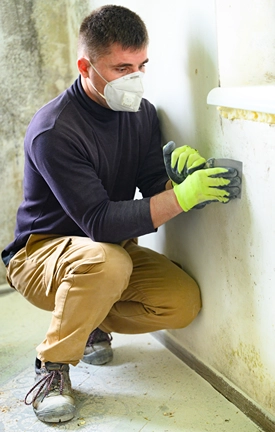Educational Trips to Take With the Kids in 2025
Traveling as a family requires money, perfect timing and considerable planning, so make it count when you can go on an adventure together. Making the trip fun and educational is a thoughtful way to give your kids a memorable experience. The whole family will have a blast visiting these six destinations in 2025.
1. Monterey Bay Aquarium, Monterey, California
The Monterey Bay Aquarium isn’t your ordinary marine park. It has hundreds of exhibits with amazing aquatic and avian critters and tens of thousands of plants, leaving children of all ages in awe of wildlife in various habitats. However, these aquariums are just the bait to lure the public into ocean conservation.
The nonprofit aims to raise the next generation of eco-warriors, inspiring growing minds to innovate solutions to address pressing environmental challenges. Adding a tour to your itinerary lets your little ones learn fascinating facts and delightful stories about animals and their habitats. The aquarium also holds live feeding sessions and auditorium programs to share exciting progress on its conservation work.
2. Plimoth Patuxet Museums, Plymouth, Massachusetts
Elementary school students only hear about the Mayflower story in their classrooms. Visiting the actual sites where the Pilgrims established the Plymouth Colony more than 400 years ago is interesting to even nonhistory buffs. The events in this complex of living history helped shape the modern-day United States and led to the first Thanksgiving Day celebrations.
It also features the Historic Patuxet Homesite, where your kids will learn about the way of life of the Wampanoag people who have lived in the area for over 12,000 years.
Children can relive the day-to-day life of the Pilgrims in the 17th-century English Village. Touring the Plimoth Grist Mill reveals how the Plymouth Colony residents ground corn to sustain themselves.
Guests can also hop onto the Mayflower II — a full-scale replica of the original ship the Pilgrims used to cross the Atlantic from the United Kingdom.
3. Kennedy Space Center Visitor Complex, Merritt Island, Florida
The Kennedy Space Center doubles as a NASA field center and a theme park. It promises thousands of experiences, from meet-and-greets with actual astronauts to interactive exhibits with incredible artifacts, including a real Moon rock.
You’ll see displays of gigantic rockets, real-life lunar modules, Mars rover replicas, the newest concept vehicle for Martian landscape navigation and more. The immersive attractions include a multistory indoor play area, astronaut training and shuttle launch simulations.
Walking up close to massive machines instrumental in realizing some of humankind’s most significant achievements can capture your children’s imagination and nudge them into astronautics. Older kids fascinated by science, technology, engineering, arts, mathematics, history, and geopolitics would love the various presentations retelling the thrill of the space race and the Hubble Space Telescope’s trials and triumphs.
4. Elk Country Visitor Center, Benezette, Pennsylvania
This property features the largest elk herd in the northeastern U.S. — a remarkable fact, considering the Keystone State’s deer population was once on the brink of extinction. The Elk Country Visitor Center was instrumental in helping the species recover successfully and now focuses on teaching the public about its role in the ecosystem.
This conservation education facility is on 245 acres. It has viewing trails and offers horse-drawn wagon rides, bringing guests closer to this magnificent creature freely roaming in the wild.
The most exciting time to visit is the fall. Fall months are elk’s mating season, giving little ones front-row seats to watch bulls — male elk — engage in epic fights at the forest edge to earn mating rights with cows — female elk. Ferocious clashes of antlers are entertaining and enlightening to children regardless of age and gender.
5. Bristol Renaissance Faire, Kenosha, Wisconsin
This Renaissance fair lets your family travel back in time to 1574 when Queen Elizabeth I visited the English town of Bristol. This 30-acre recreated village gives your children a glimpse of 16th-century fashion, food, arts, crafts and entertainment like full-armored jousts.
Your Elizabethan rugrats can dress up as royalty or knights and blend in with hundreds of crafters and artisans in the festivities. There’s also a wide range of activities, including live-action fantasy quests, magic shows, pike drills, tea parties and storytelling.
The Bristol Renaissance Faire presents a unique experience for the whole family. Aside from sharing a day filled with laughter, discovery and exploration, your trip may inspire your little ones to dive into the golden age of English history.
6. Grand Canyon National Park, Coconino and Mohave Counties, Arizona
The Grand Canyon is deservingly on every family’s bucket list. The sight of endless mile-deep walls of ancient rock — some dating as far back as 1.8 billion years — is surreal.
The Grand Canyon’s appeal is universal. However, kids interested in geology, archeology, history, astronomy, rafting and camping will find it extra appealing.
The national park offers various guided learning adventures, as well as scenic roads for driving and biking. Alternatively, you can arrange mule trips or take the Grand Canyon Railway.
Moreover, you can speak with your lodge to set up a raft trip on the Colorado River. You can also spend the night under the Milky Way and name constellations with your children at campgrounds within the park.
Make 2025 a Year of Learning and Adventure
The U.S. has a host of riches regarding natural wonders. Make these four educational destinations a priority in 2025 to make it your children’s most adventurous and memorable year yet.
 Author bio: Cora Gold is the Editor-in-Chief of women’s lifestyle magazine, Revivalist. She strives to live a happy and healthy life with her family by her side.
Author bio: Cora Gold is the Editor-in-Chief of women’s lifestyle magazine, Revivalist. She strives to live a happy and healthy life with her family by her side.
Follow Cora on Facebook and LinkedIn.







